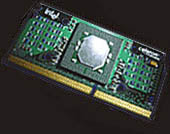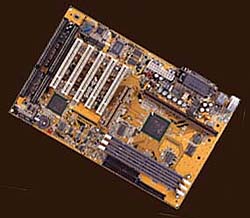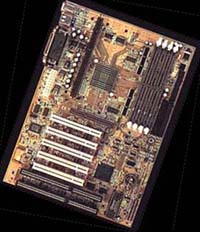The Essentials Components:
These are the components that are essential in
a complete and up-to-date system. We have recommended two products in most
categories, reflecting the two distinct systems that are taking shape in
our search for the ideal PC. In all cases, we first introduce the product
we recommend for
the average user’s system, and then go on to
introduce the product recommended for the more demanding user. The distinctions
between the two is often one of price, but not price alone –we have only
chosen a more expensive product for the higher-end system if it demonstrated
an appreciable superiority in performance. In some cases, we have recommended
the same product for both systems, and in yet other cases, we have mentioned
other products in addition to those recommended. These other products may
be considered possible alternatives to the recommendation.
CPU
| By now, everybody should be familiar
with the overclockability of the Celeron
300A. Many users have successfully reached 450MHz with this CPU, but
at the same time, quite a few people have reported problems reaching and
maintaining 450MHz. In view of this, we felt we should recommend the $110
Celeron
366, which is a little more expensive than the 300A but which can,
however, reach 458MHz with no problems at all, once you set the FSB speed
to 83MHz on your motherboard (5.5x83MHz = 458MHz). |
 |
We are not saying the Celeron 300A is inferior
in any way – we have quite successfully reached 450MHz with this CPU and
so have many others, but the fact remains that a fair number of people
have complained about stability at 450MHz with the Celeron 300A. Hence,
while the 300A still has the better price-to-performance ratio, the 366
may be a more stable –if somewhat more expensive- way of passing the 450MHz
mark. This makes it a good choice for the average user, as long as he or
she has no qualms about overclocking.
For the more demanding user, we recommend the
Celeron
400, overclocked to 500MHz by setting your FSB to 83MHz (6.0x83MHz
= 500MHz). This way, you only spend $160 to reach 500MHz, which is an offer
you simply cannot turn down. Once you reach this speed, you’ll be among
the elite of computing speeds, and not even a certified speed freak need
sneer at that.
| Motherboard

There is really no question: the Abit
BH6 is the best motherboard for average users and overclockers alike.
All you spend is $105, and you’ll be in business in no time. Overclocking
is rendered childishly simple with the jumperless setup and the SoftMenu
II feature.
|
Meanwhile, if you demand
still more overclocking capability and future compatibility for upcoming
Celerons and the Pentium
III, the recently introduced $130 Abit
BX6 version 2.0 is exactly what you need. While this board is generally
quite similar to the BH6, it has somewhat more features for overclocking.
|
Memory
 |
For the average user and the high-end
user alike, we recommend Corsair 128MB of PC100 CAS-2 memory from a recognized
manufacturer. This will cost about $250, which is a little on the expensive
side but is nevertheless worth the expense, because these modules are of
high quality and are very stable for overclocking. |
We recommend you buy a single 128MB memory module
rather than two 64MB modules as this will leave memory slots free for future
upgrades. And rest assured, there will be future upgrades when you’ll be
glad you did. |





